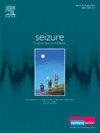Consanguinity and treatment strategy determine seizure outcome and mortality in infantile epileptic spasms syndrome in Azerbaijan
IF 2.8
3区 医学
Q2 CLINICAL NEUROLOGY
引用次数: 0
Abstract
Objective
To determine the etiology of Infantile Epileptic Spasms Syndrome (IESS) in Azerbaijan, and to evaluate treatment response and outcome.
Methods
For the seventy children referred for ongoing IESS over a 3-year period, we studied medical history, physical examination, EEG, neuroimaging and genetic testing.
Results
37.1% were born to consanguineous parents. The etiology was genetic in 50.0% of cases and brain injury in 17.1%. Epileptic spasms persisted for a median of 11.5 months. 72.9% of children experienced additional seizure types. Consanguinity, genetic etiology, and conventional treatment were significant predictors of mortality (p = 0.016, p = 0.034, and p = 0.002, respectively), with a 7.7-fold increased risk of death in children of consanguineous parents. In multivariate analysis, genetic etiology and treatment regimens that did not include first-line therapies such as vigabatrin and hormones remained significant risk factors. The mean duration of epileptic spasms was shortest with hormonal therapy (5.8 months), compared to vigabatrin (14.8 months), or other anti-seizure medications alone (30.6months). The risk of global developmental delay was 3.4 times higher in children with additional seizure types, and 37-times higher in those with neurological signs.
Significance
Genetic etiology, parental consanguinity, and treatment response that are correlated with increased mortality, are modifiable factors requiring education.
亲属关系和治疗策略决定了阿塞拜疆婴儿癫痫痉挛综合征的发作结果和死亡率。
目的:了解阿塞拜疆儿童癫痫性痉挛综合征(IESS)的病因,并评价其治疗效果和预后。方法:对70例持续3年的IESS患儿进行病史、体格检查、脑电图、神经影像学和基因检测。结果:37.1%为近亲出生。遗传病因占50.0%,脑损伤病因占17.1%。癫痫痉挛持续时间中位数为11.5个月。72.9%的儿童出现了额外的癫痫发作类型。血亲关系、遗传病因学和常规治疗是死亡率的重要预测因素(分别为p = 0.016、p = 0.034和p = 0.002),血亲父母的儿童死亡风险增加7.7倍。在多变量分析中,遗传病因和不包括维加巴林和激素等一线治疗的治疗方案仍然是重要的危险因素。与vigabatrin(14.8个月)或其他单独抗癫痫药物(30.6个月)相比,激素治疗的癫痫痉挛平均持续时间最短(5.8个月)。有其他癫痫类型的儿童整体发育迟缓的风险是3.4倍,而有神经症状的儿童则高出37倍。意义:与死亡率增加相关的遗传病因、亲本血缘关系和治疗反应是需要教育的可改变因素。
本文章由计算机程序翻译,如有差异,请以英文原文为准。
求助全文
约1分钟内获得全文
求助全文
来源期刊

Seizure-European Journal of Epilepsy
医学-临床神经学
CiteScore
5.60
自引率
6.70%
发文量
231
审稿时长
34 days
期刊介绍:
Seizure - European Journal of Epilepsy is an international journal owned by Epilepsy Action (the largest member led epilepsy organisation in the UK). It provides a forum for papers on all topics related to epilepsy and seizure disorders.
 求助内容:
求助内容: 应助结果提醒方式:
应助结果提醒方式:


